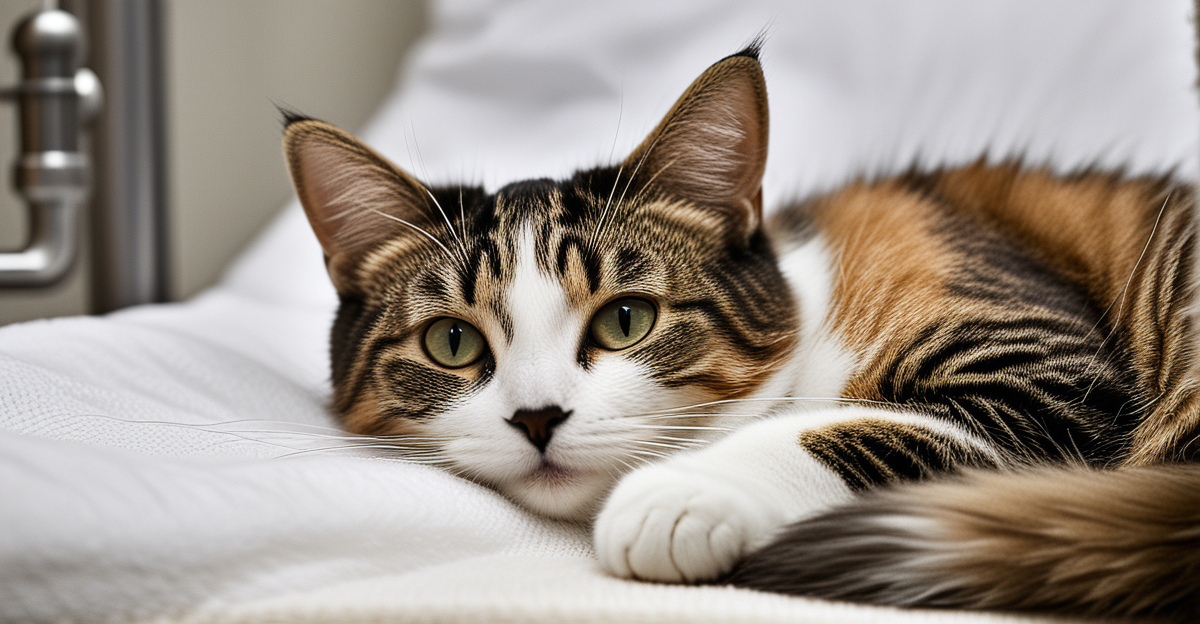Understanding the Stress of Chemotherapy in Cats
Cats undergoing chemotherapy can experience both physical and mental stress, impacting their overall well-being. It’s critical for cat owners to recognise and address these stressors. Chemotherapy might cause fatigue, nausea, and loss of appetite, leading to stress. Behaviorally, stressed cats may show signs such as increased hiding, avoidance, or unusual aggression. Recognising these signs promptly can aid in supporting the health of a cat undergoing treatment.
Veterinarians often reassure that understanding the stress in chemotherapy cats is vital. Addressing stress not only improves the cat’s mental state but can also enhance the effectiveness of the treatment. Observing a cat’s daily habits for any deviations can provide insight into potential stress. Providing a comforting environment with consistent routines can mitigate stress, fostering a soothing atmosphere.
A lire en complément : Designing an Accessible Outdoor Catio: The Ultimate Guide for Cats with Mobility Issues
The importance lies in maintaining a supportive environment and recognising behavioral changes. This support system enables cats to navigate the challenges associated with their treatment with greater ease. By being vigilant about these stress indicators, owners can take proactive steps to improve their pet’s quality of life during such medically demanding times.
Essential Products for Chemotherapy Cats
Appropriate products for chemotherapy cats are crucial in managing stress and ensuring comfort. Recommended calming aids like pheromone diffusers can produce a soothing environment that alleviates anxiety, creating a peaceful atmosphere. Nutritional supplements like L-theanine and omega-3 fatty acids may help reduce anxiety, providing both nutritional support and calmness.
Cela peut vous intéresser : Creating a Secure and Stimulating Balcony Oasis for Your Feline Friend
Choosing the right physical products plays a significant role. High-quality carriers offer a safe haven during vet visits, ensuring your cat feels secure. Carriers with soft padding and ventilation enhance comfort, easing the stress associated with travel and treatment. Blankets with calming textures provide warmth and security, essential during rest periods.
Incorporating these products into the cat’s environment contributes to their overall well-being. It is vital to evaluate each product based on the individual needs of the cat, considering factors such as the size, behavioural tendencies, and specific stress triggers they might face. By prioritizing comfort and targeted stress relief, owners can significantly improve their cat’s experience during chemotherapy, offering a better quality of life.
Veterinary Advice and Ongoing Care
Ensuring comprehensive veterinary support for chemotherapy cats is crucial for successful treatment outcomes. Regular vet check-ups are essential in monitoring the cat’s health and any side effects that may arise. Let’s delve into the importance of these visits.
Why are regular check-ups important? They provide veterinarians the opportunity to assess the cat’s response to treatment and adjust if necessary. Moreover, early identification and management of side effects can prevent complications, enhancing overall well-being. Discussing side effects openly with a vet ensures tailored care plans that suit your cat’s unique needs.
Open dialogue with veterinary professionals is invaluable. It allows for adjustments in medication or dosages, should unexpected reactions occur. This communication fosters a proactive approach, vital during the treatment’s demanding course. Veterinary expertise is key in navigating the complexities of chemotherapy, ensuring your feline companion receives compassionate and effective care.
In conclusion, reinforced vet interaction, alongside astute observation from owners, plays a pivotal role in managing chemotherapy’s challenges. Trusting veterinary advice leads to a supportive partnership, optimising the care and comfort of cats during this critical time.
Creating a Soothing Environment
Crafting an environment of comfort for chemotherapy cats can significantly ease their stress levels. Key environmental adjustments include ensuring a quiet, safe space where the cat can relax without disturbances. The choice of bedding is also crucial; opt for soft, easily washable materials that provide warmth and security. Cats recovering from chemotherapy may prefer beds with enclosed sides, offering a sense of protection.
Creating the right resting areas involves positioning bedding in quiet corners of the home, away from active household areas. Consider using calming scents such as lavender or chamomile, which can soothe anxiety. Diffusers with feline-appropriate essential oils can help maintain a relaxing atmosphere.
Incorporating gentle sounds or white noise machines may mask unsettling household noises, contributing to a peaceful environment. Some cats respond positively to soft classical music or nature sounds, which may reduce stress.
By integrating these thoughtful environmental modifications, cat owners can provide a sanctuary that supports their pet’s emotional well-being during chemotherapy. This approach not only alleviates stress in chemotherapy cats but also fosters a nurturing atmosphere, pivotal to the healing process.
Comfort Strategies During Treatment
Maintaining comfort measures for chemotherapy cats can dramatically enhance their well-being during treatment. Ensuring routine provides stability; familiar schedules help mitigate anxiety. Regular feeding times, planned play, and consistent settling places create a predictable environment, essential for a cat’s peace of mind.
Handling techniques are vital. Calm, gentle mannerisms during interactions can ease stress. When lifting cats, support their body fully, often best achieved with two hands, one under the chest and the other beneath the hindquarters. This reduces discomfort, contributing to a soothing experience.
Providing accessible safe spaces is crucial for cats needing retreat. Offering a quiet corner or a box-lined with soft materials allows for privacy, helping them decompress. These retreats act as escape zones, free from disturbances.
Physical contact like petting and soft brushing can be comforting if a cat is receptive. Observing their body language ensures interactions are welcome, maintaining a bond without adding stress. Simple gestures like these, embedded into their routine, offer comfort and show attentive care. By prioritising these strategies, owners promote a more positive experience during challenging treatment phases.
Engaging in Stress-Relief Activities
Incorporating specific activities for calming cats undergoing chemotherapy can significantly aid in managing their stress levels. Gentle play is essential; thus, using soft, lightweight toys encourages physical activity without overwhelming them. Feather wands or small balls can be introduced to stimulate light exercise, providing an enjoyable distraction.
Positive reinforcement and reward systems prove beneficial. Cats respond well to consistent praise and treats, fostering a sense of security. This method reinforces calm behaviour, nurturing a positive association with their environment.
Exploring the use of soothing music or videos for stress relief is highly effective. Calm melodies or nature sounds can create a tranquil setting. Some cats may enjoy videos designed for feline entertainment, featuring gentle animations or images of nature. These options can captivate attention and ease anxiety.
Regular interaction, including gentle petting, strengthens the bond between owner and cat, creating an emotionally supportive environment. Observing the cat’s response to these stress-relief activities is crucial to ensure they are beneficial without causing additional stress. Through informed choices, owners can improve their chemotherapy cat’s experience, enhancing both their mental and physical well-being.










